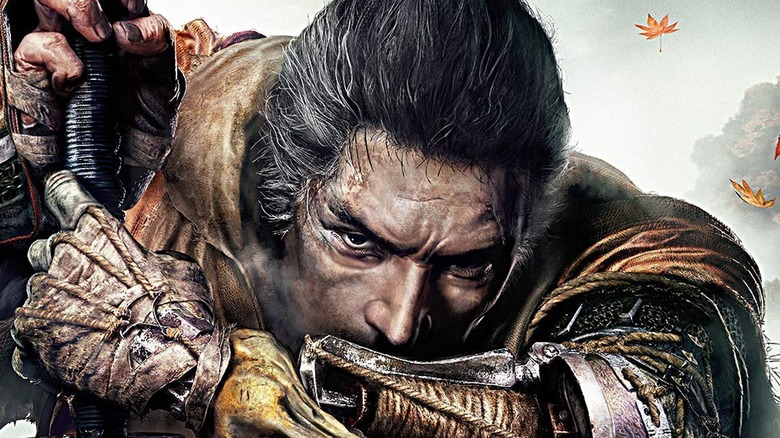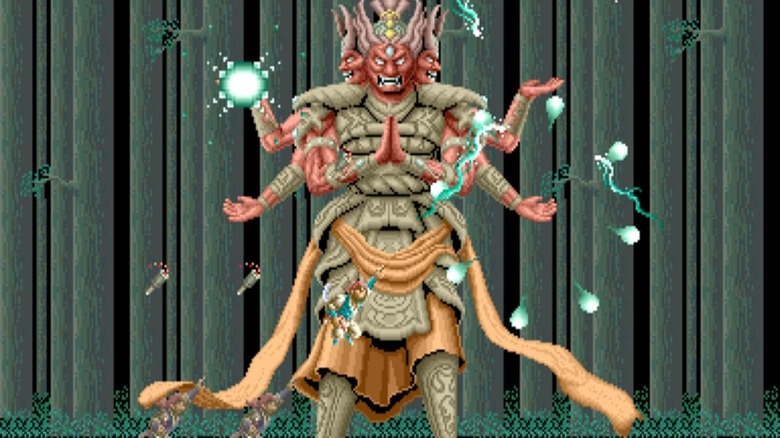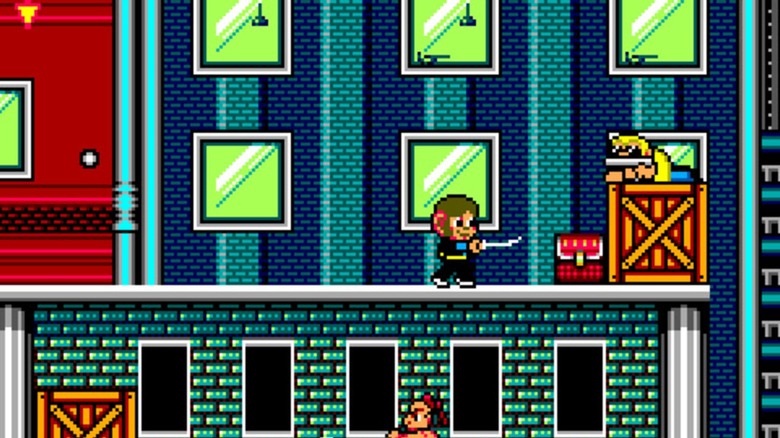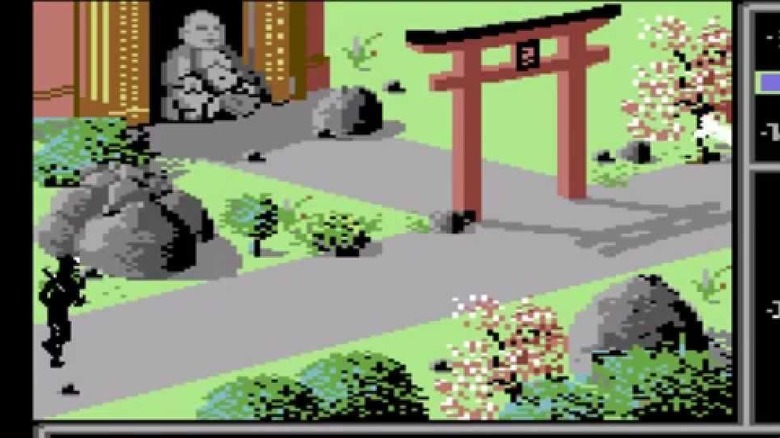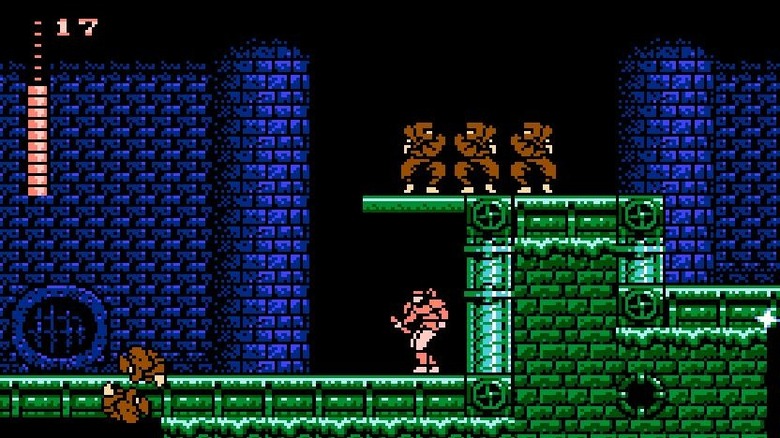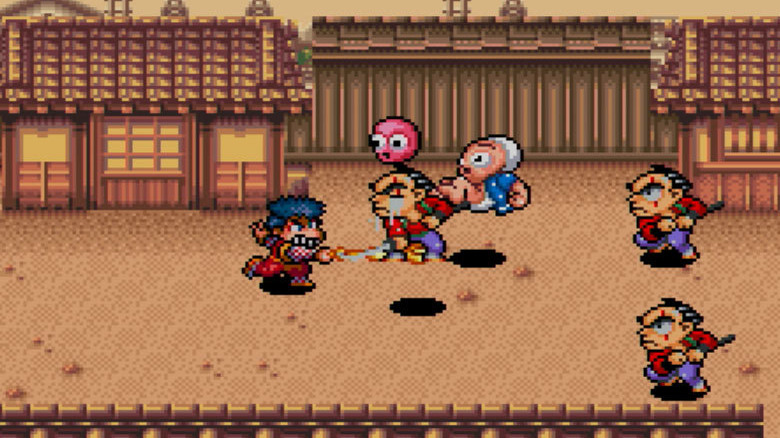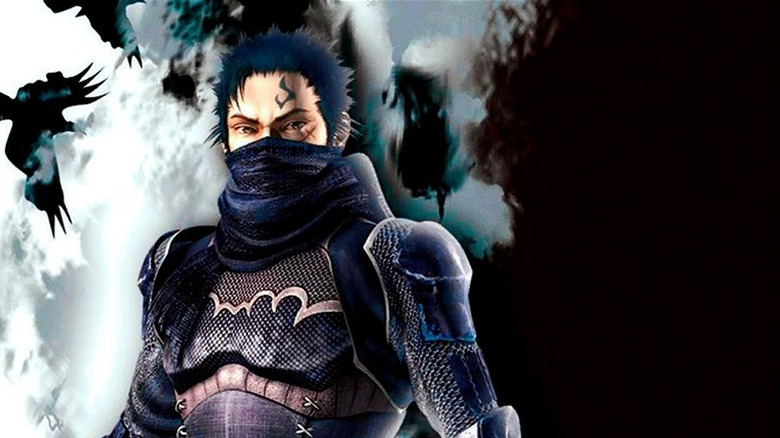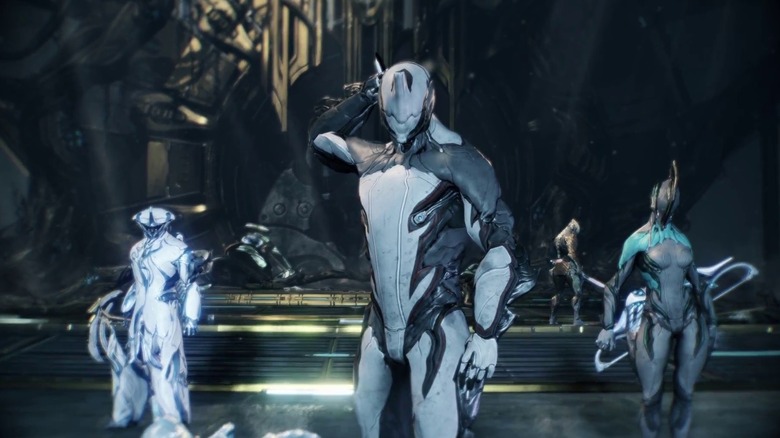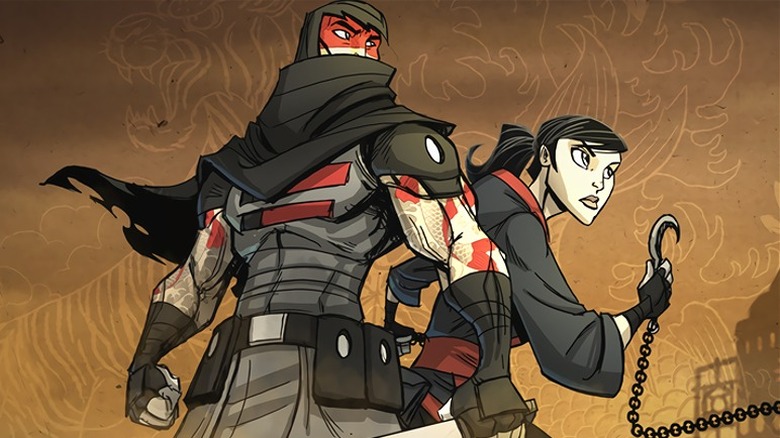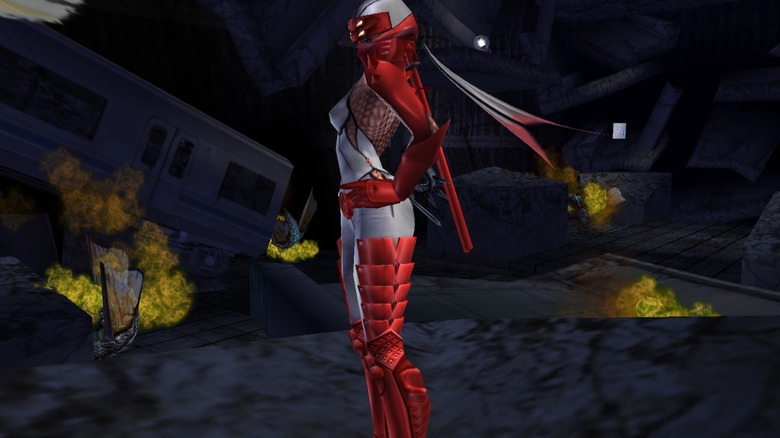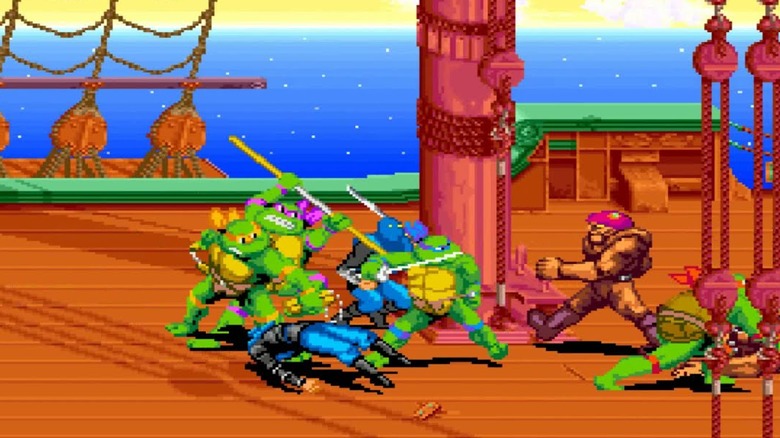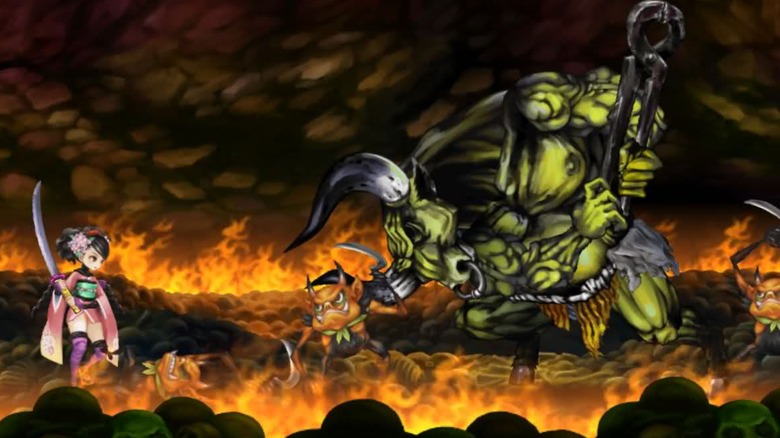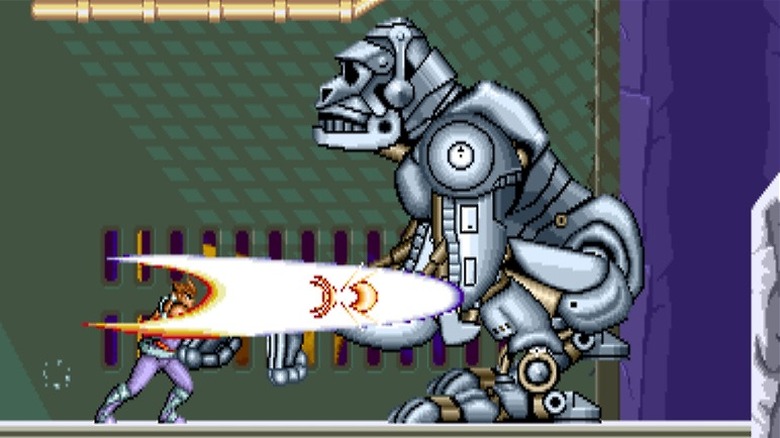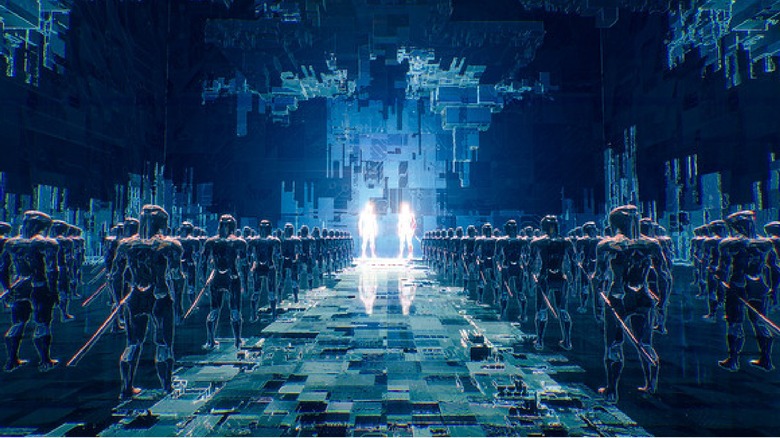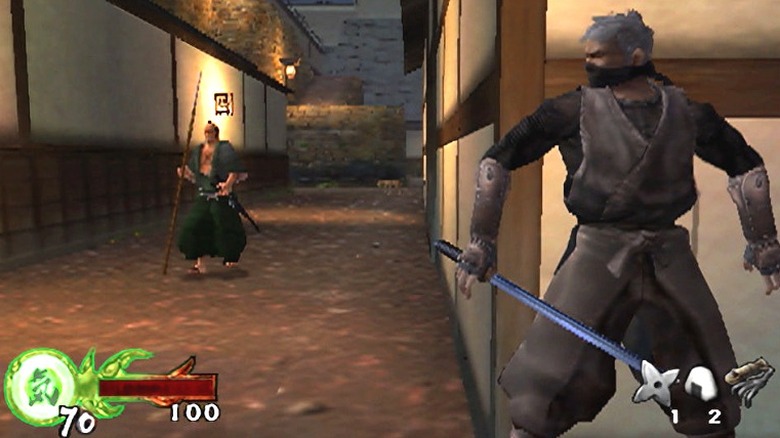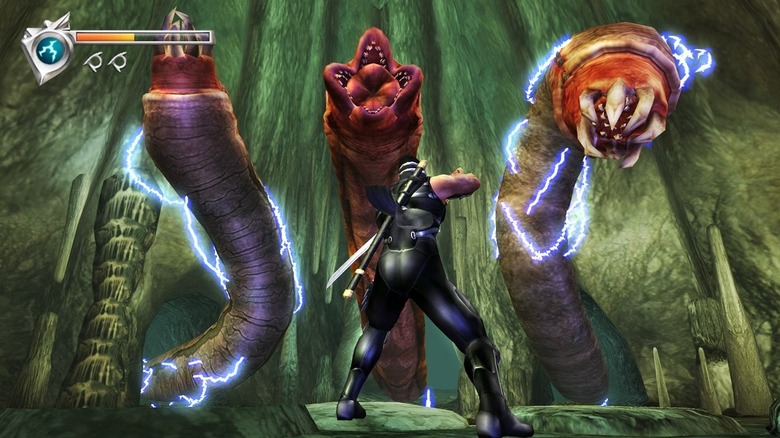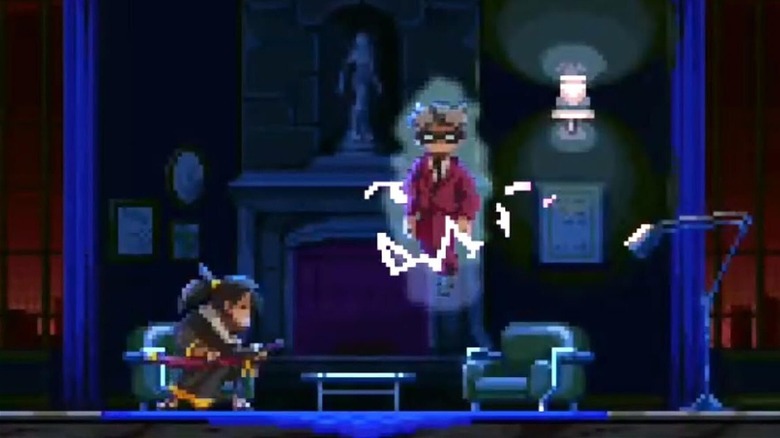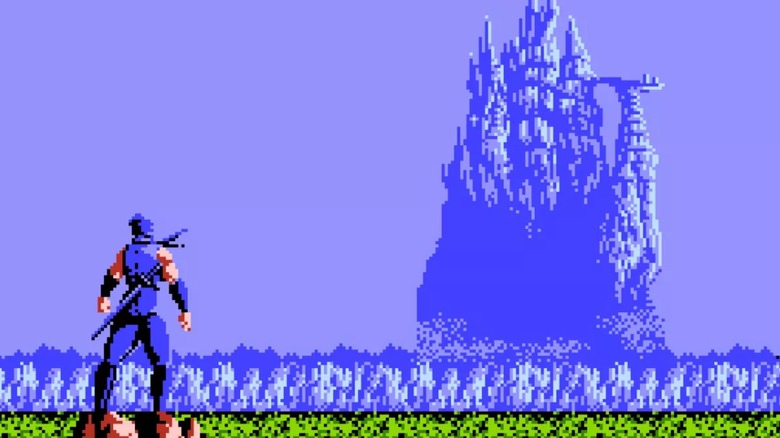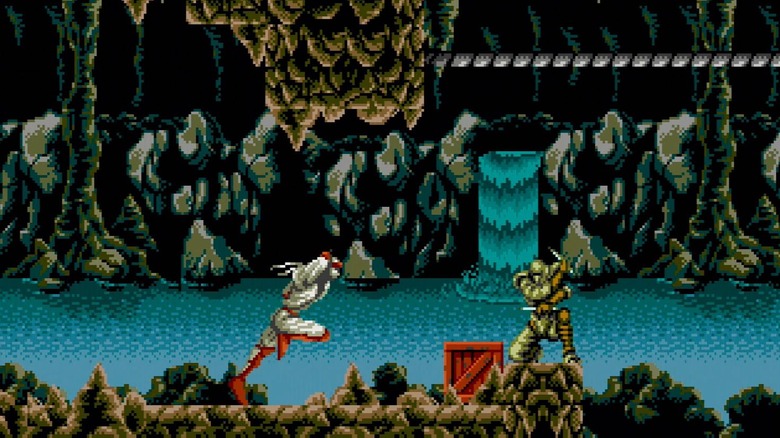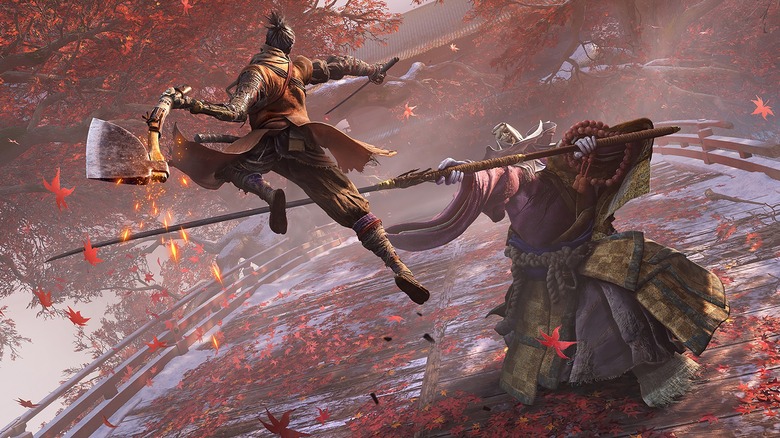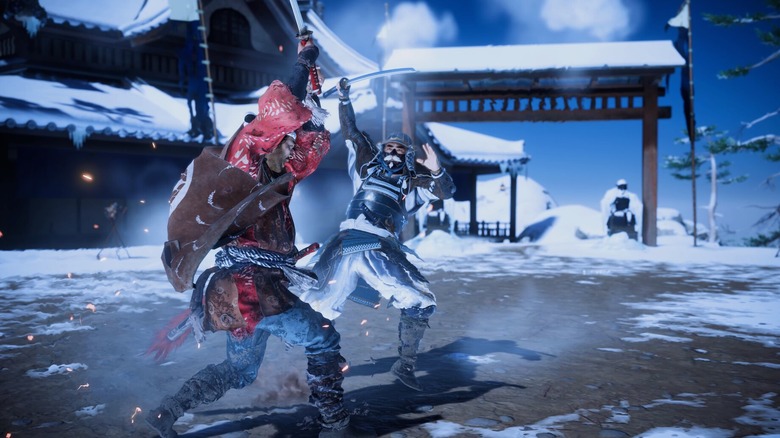The 20 Best Ninja Games Ranked
While certain noted academics may define ninja only by their mammalian status, fighting all the time, and their tendency to flip out and kill people, we can assure you there's a lot more to quality ninjutsu than that (though they do help).
Video games have long been the perfect medium to explore the beautiful, bloody spectrum of ninja awesomeness, and in celebration of a glorious history in the subtle arts of stealth and persuasion, here's a list of the best ninja-based titles ever created.
20. Ninja Spirit
What "Ninja Spirit" lacks in complexity and speed compared to some of its peers, it makes up for in sheer chaos. At any given moment, ten keen-to-kill ninja enemies, all tossing multiple shurikens, can be onscreen at once, and in the Arcade, one hit from ANY of them means your death. The bosses are massive demons of Japanese myth, and just as epic and deadly as one can imagine.
Fortunately, you eventually get two phantom copies of your main character, and getting them in just the right place to wreak maximum havoc on anything that comes is one of many of the joys this underrated little gem gave the gamers fortunate enough to track this down in arcades or on the TurboGrafx-16.
19. Alex Kidd in Shinobi World
With his cool mutton chops and wild world full of painfully specific Japanese folklore, Alex Kidd is one of those mascots that time forgot. Hailing from an age before Sonic the Hedgehog, all of Alex's exploits are stranded on the poor, underrated Sega Master System.
It's a real shame when you consider that his final outing, "Alex Kidd in Shinobi World," is one of the best platformers in the series. It's packed with some wonderful earworm-y chiptunes and a pole swing mechanic to zoom across levels. Wildly enough, it started life as a sort of chibi remake of the original "Shinobi," with that game's four bosses returning in cutesy versions. Despite the aesthetic, "Alex Kidd in Shinobi World" still delivered the fast-paced action that ninja fans would expect.
18. The Last Ninja
On the surface, "The Last Ninja" is yet another point-and-click adventure game on the Commodore 64. But spend any significant time with it, and you can see the conceptual seeds that would eventually blossom in games released decades later. You could target individual body parts during combat, a la the V.A.T.S. system from "Fallout."
The game features one of the first truly open worlds in gaming, with its isometric view letting players move and backtrack pretty much anywhere in a given level. To make their way through the world, a full range of ninja weapons were granted to the player. Today it feels like a severe de-make of "Assassin's Creed," and that's not a phrase one can apply to anything else made in 1987.
17. Shadow of the Ninja
One of the Nintendo Entertainment System's more underrated treasures, "Shadow of the Ninja" feels like the perfect hybrid between "Contra" and that way-out-there NES port of "Strider." Jam-packed with weird and intense obstacles and an unforgiving difficulty curve, it's the kind of game that both haunts and delights fans of retro action gaming.
"Shadow of the Ninja" is also one of the few ninja games with co-op, allowing you to play as a male or — another rarity — a female ninja right from the outset. Makes sense when you consider what a lonely profession ninja-ing can be.
16. Legend of the Mystical Ninja
The infamous thief/assassin Ishikawa Goemon is essentially Japan's answer to Robin Hood, but the specifics of Goemon's life are possibly even more inseparably Japanese than Robin Hood's is British. Suffice to say, the poor guy's pop cultural street cred is virtually nil in the West, except for his one lucky break, which occurred when Konami saw fit to bring Goemon's SNES debut to Western shores. And "Legend of the Mystical Ninja" is a heck of a starting point.
Part side-scrolling beat-em-up, part platformer, part RPG, and all very quirky, the game's weird Japanese design elements turned the grim legend — seriously, look up how that dude supposedly died and shudder — into one of the more endearing would-be mascots of Konami's heyday.
15. Shinobido: Way of the Ninja
"Shinobido: Way of the Ninja" feels a LOT like "Tenchu," which makes sense considering the same folks who birthed that series into existence jumped over to Acquire, "Shinobido's" developer. However, splitting from their former employers gave them free reign to experiment. "Shinobido" stars a ninja with amnesia named Goh, who wanders Japan aimlessly until he finds himself in a three-way standoff between three feudal lords, all looking for a guy to do their dirty work.
What follows is not your typical ninja stealth title. Yes, there's a lot of the good stuff of running, jumping, hiding, and slitting daimyo throats from the shadows. But each little action you take affects your respect from one of the Lords, kinda like a precursor to the "Middle-earth" games' Nemesis system. It makes for a nice, thoughtful twist that we still haven't seen much of.
14. Warframe
Strictly speaking, "Warframe" isn't specifically about ninjas. It's more of a "if it looks like a duck and quacks like a duck" sort of ninja game. You play as a race of lithe space warriors called the Tenno as they slice and shoot their way through the various groups of interstellar jerks who want their heads.
There's no doubt once you start playing what the intent was, especially considering the extensive amounts of customization you can pour into your individual Tenno's blades, guns, and costume to make your own special brand of lethal space-faring viper. Most shocking, however, is the fact that "Warframe" is a free-to-play title, and yet, in many ways, its an epic experience on par with (and often surpassing) other live-service games.
13. Mark of the Ninja (Xbox 360, PC)
Stealth titles with any sort of depth are typically 3D games, but "Mark of the Ninja" flies in the face of that tradition. Cel-shaded platformers aren't anything new, but there are very few games that use light and shadow the way this does, portraying not just enemies as dangerous little cones to avoid, but limiting the ninja's vision as well.
It's one of the few games of its sort that allows for non-lethal options, meaning the player can rely solely on stealth and wits to succeed. Combine that with a surprisingly compelling plot where the mission is less against evil private military goons, but more against the titular mark slowly driving your protagonist insane, and you've got one of the most distinctive ninja games of the last few years.
12. Nightshade
"Shinobi" and "Nightshade" on the PS2 are more brother and sister, creatively, than original and sequel. "Nightshade" basically copy-pastes everything great about "Shinobi": the tricky platforming, the slick sword-and-shuriken based combat, the great taste in scarves.
The big difference lies in the TATE system, a gimmick that allows the player to kill multiple enemies in an area at once, each kill powering up their blade to the point where one slash can take down the most dangerous bosses in the game. It's a joy in "Shinobi," but "Nightshade" takes that glorious little gimmick to new heights. Many of the best levels of the game require our hero Hibana to chain a series of mid-air kills to slay demons and look good doing it.
11. TMNT 4: Turtles in Time
There were almost a half-dozen games starring the Ninja Turtles prior to "Turtles in Time" hitting the SNES, and goodness knows how many dozens since. None of them have ever hit the perfect sweet spot that "Turtles in Time" does, though. It manages to capture all the personality of the cartoons with its bright color scheme and wild animation.
The time-travel hook gave Konami license to get creative with the endless legion of Foot Soldiers and series villains. The combat itself feels divine with every hit, slam, and thrash. And three words: Neon Night Riders. "Turtles In Time" is simply the ideal way to step into the Turtles' shells for a little while, and it's remained just as compulsively playable for over two decades.
10. Muramasa: The Demon Blade (Wii)
Developer Vanillaware has pretty much cornered the market on pairing lavish, breathtaking 2D artwork with old-school side-scrolling beat-em-up gameplay, sprinkled with a bit of JRPG fairy dust for extra flavor. Unfortunately, while "Odin Sphere" and "Dragon's Crown" get most of the attention, one of their best efforts, "Muramasa," has largely faded into memory. That's a shame, because it's maybe the strongest release of the three.
Vanillaware's fast-paced, lightning-quick combat is a better tonal fit with the Edo-period ninja story and aesthetic, which is captivating in its own right. The story follows a princess possessed by a dead ronin, and an amnesiac ninja who accidentally unleashes hell. "Muramasa" is one of the most impressively detailed and extravagant visual tellings of Japanese folklore in all gaming.
9. Strider
Within the first ten minutes of hitting start on "Strider" in the arcades, Strider Hiryu hang glides into hyperfuturistic Russia, fighting off mech spiders with a giant rapid-slicing blade. Then he gets an assist from his robot tiger friend before battling a flying caterpillar wielding a hammer and sickle.
That sentence has no analog in gaming, and yet it's just a small taste of just how conceptually bananas "Strider" gets as things go along. Your one constant in this wacky world is Hiryu himself, sprinting down avalanched mountains, making too-cool poses while flipping through the air, and climbing up and down the walls in his quest to take down Grandmaster Meio, one of the best and most intimidating bosses ever created. Seriously, nothing from the 8- and 16-bit eras has a line in it as great as "All sons of old gods, DIE!"
8. Ghostrunner
A ninja game really isn't complete without some sick maneuvering and intense action, and "Ghostrunner" delivers on both of these fronts with its parkour-focused gameplay. "Ghostrunner" is a first-person action platformer centered around navigating intricate sci-fi landscapes and taking down enemies with a single decisive blow. However, enemies have the same ability to one-shot the player, making the whole exercise into an intricate dance of complex planning and speedy execution. Paired with a sleek cyberpunk aesthetic, "Ghostrunner" is one of the more underrated ninja-style games in recent history.
"Ghostrunner" perfectly captures the feeling of being a ninja through its slick controls and first-person viewpoint. The P.O.V. makes it easier for the player to immerse themselves into the shoes of our protagonist and live out their wildest high-flying ninja fantasies. The game's punishing difficulty may be a hurdle for some players, but learning the city and mastering the game feels like a massively satisfying accomplishment. As you might have guessed from the name, "Ghostrunner" even has a dedicated speedrunning community that helps keep the dream of being the quickest ninja alive and well.
7. Tenchu: Wrath of Heaven
"Tenchu: Wrath of Heaven" is the epitome of a certain style of ninja experience, a fine wine meant to be sipped carefully and thoughtfully rather than guzzled. Rikimaru and Ayame are designed to kill silently and invisibly, like in most stealth ninja titles, but there's a patience and precision involved that no other title perfected like this — least of all, the "Tenchu" sequels that followed.
That patience is rewarded as new characters become available, all operating on the same principles of stealth, the silent kill, and treacherous tactics against one's enemies. The story's hows and whys become more intriguing as the game moves along, reaching a climax in the present day with a job probably better suited to Agent 47 than an Edo-period ninja. Even despite its occasionally bratty camera, "Wrath of Heaven" is a refined confection that demands respect.
6. Ninja Gaiden Black (Xbox)
It still seems unconscionable that "Ninja Gaiden" was ever gone as long as it was between "Ninja Gaiden 3" on NES and the Xbox revival (a 12 year gap, to be specific), but when it returned, it returned with a vengeance.
While certainly fairer in difficulty than the NES titles, Ryu Hayabusa's Xbox adventure "Ninja Gaiden Black" is utterly gorgeous. It's also utterly unmerciful in punishing mistakes, though it also rewards skillful attacks and tactics by making you stronger as you fight your way through the campaign. All together, these make for one of the most visceral and cathartic combat systems to this day. The penalty for not mastering that combat system down to the last button press is cold, swift death. As it should be.
5. Katana Zero
When it comes to ninja games, not every game needs to take place in Feudal Japan to be a good ninja story. In fact, sometimes a more stylistic sci-fi or modern style helps enhance a ninja game far better than a traditional style would. This is exactly the case for "Katana Zero," a stylized indie actioner that combines neo-noir and cyberpunk with fierce time-bending swordplay. "Katana Zero" captures exactly what it means to be a ninja assassin through its gameplay and level design. In this game, players control the assassin Subject Zero as they complete assassination contracts by hacking and slashing their way to their final target.
"Katana Zero" captures the look and feel of an intense action movie through a clever combination of different mechanics, include parkour and slowing down time. Deploying these in tandem, players can pull off the coolest ninja moves as they slice through hordes of enemies. Since most enemies die in one hit, the game often becomes a beautiful balletic bloodbath of combo-based killing that is sure to keep players hooked. "Katana Zero" is dripping with style and packed with surprising plot twists and set pieces, proving that ninja games can come in many unexpectedly wonderful forms.
4. Ninja Gaiden
The NES has no shortage of speedy action-platformers with lethal enemies and magical powers, but the original "Ninja Gaiden" remains in an echelon all by itself. It is legendary for being one of the hardest games on the system — and deliberately so instead of accidentally, like many other NES titles — but also because it set the bar in how this type of game is even presented.
Seeing Ken Hayabusa fight and die against the light of a full moon is still one of the most enduring images in gaming, and while "Ninja Gaiden" wasn't the first game to use cutscenes, it was arguably the first to perfect them. It made the idea of movie-quality stories in games not only possible, but desirable, all bolstered by one of the coolest, most evocative video game soundtracks ever composed.
3. Shinobi 3
Take everything great about each of the games above, and cram them into one handy package. That's "Shinobi 3." Everything you want out of a ninja game is here: the flashy attacks, the speed, the acrobatics, the mystical arts, the swordplay, the shurikens, and the endless horde of masked enemies to lay to waste.
But "Shinobi 3" refused to limit itself, and stuck our hero, Joe Musashi, in an insanely wide range of wild scenarios. From serene bamboo forests, to a laboratory that seems to only manufacture living brain tissue, to surfing during a missile assault, somehow none of it seems out of place. All of it, no matter what, encourages the player be the most awesome ninja on the planet at the push of a button.
2. Sekiro: Shadows Die Twice
Most gamers are already familiar with FromSoftware's soulslike titles. From the classic "Dark Souls" franchise to the juggernaut that is "Elden Ring," almost every game that FromSoftware releases feels like a grueling masterpiece. Rather than resting on their laurels and reiterating what people liked about previous titles, the team behind "Sekiro: Shadows Die Twice" decided to push the boundaries of what a soulslike game could be. Luckily for players, pretty much of all those changes worked, leading to a Game of the Year win for "Sekiro."
Instead of dark fantasy world of "Dark Souls" or the warped Victorian style of "Bloodborne," "Sekiro" takes players to the Sengoku era of Japan. Here, players take control of the titular shinobi on his quest to protect the lord Kuro. The gameplay revolves around the usual intense combat of a souls-like game, with plenty of strictly-timed parrying and dodging. "Sekiro" places a larger emphasis on mastering the elements of combat, however. Unlike the usual soulslike experience, "Sekiro" features very few RPG elements, to the point where players don't level up as usual. Instead, players can invest in skill points as they figure out the perfect strategy for each new battle.
1. Ghost of Tsushima
To truly encapsulate what makes the ninja sub-genre special, a game needs to have a mix of amazing action and graceful beauty. For players who love this style and need a new game with mature adult themes, there's "Ghost of Tsushima." "Ghost of Tsushima" is an open-world action-adventure game by Sucker Punch that was first released in July 2020 for the PlayStation 4. It follows the adventures of Jin Sakai as he protects Tsushima Island during the Mongol invasion of Japan, as he learns that stealth and deception may be his greatest tools. Upon release, the game was a huge critical success and even went on to win Game of the Year at the 2020 Game Awards.
"Ghost of Tsushima" has captivated players withs its combined focus on style and historical accuracy. With these two factors combined, the beautiful open-world environment of Tsushima is a joy to explore. The cinematic Kurosawa mode, which makes the game look like a classic samurai film, ups the style factor to the stratosphere. Paired with a compelling protagonist and story about the inner struggle of a warrior who wants to remain a good man, "Ghost of Tsushima" is offers a world you'll want to invest many hours in.

